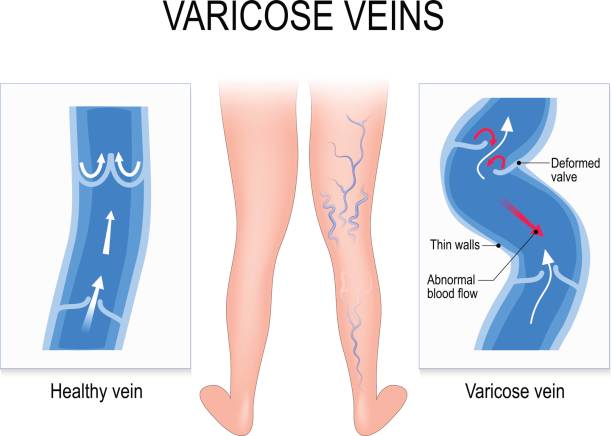Varicose Veins
The Interventional Radiologists at MRA specialize in the broad spectrum of venous diseases, including varicose veins, superficial venous insufficiency, deep venous thrombosis, May-Thurner syndrome, and lower extremity swelling.

What are varicose veins?
Varicose veins are bulging, twisted veins close to the skin. They can happen anywhere in the body but most commonly affect the legs. They can result in pain, itching, heaviness, or swelling. Additionally, their appearance can be bothersome for some patients. They typically worsen when standing for longer periods of time, or with activities.
Blood is returned from the legs to the heart through veins. These veins contain one-way valves. But when these valves are damaged, blood can pool in these veins, causing them to become enlarged. This condition is known as ‘superficial venous insufficiency’. Risk factors for this include:
- Age
- Weight Issues
- Being female
- Pregnancy
- Smoking
- Prolonged sitting or standing
- Inherited factors
Varicose veins are typically diagnosed with a proper physical exam. Then, it is important to identify the exact cause, and this is done using a specialized ultrasound technique which evaluates the superficial veins and their valves.
Procedural treatments for varicose veins and ‘superficial venous insufficiency’ may include:
- Sclerotherapy: The injection of a chemical irritant which permanently closes the diseased veins. This is performed through a tiny nick in the skin. Blood is then re-routed through healthier veins.
- Venous ablation: The use of radiofrequency or laser ablation device to deliver heat and permanently seal the diseased vein (for example ‘greater saphenous vein ablation’). This is performed through a tiny nick in the skin. Blood is then re-routed through healthier veins.
- Phlebectomy: The diseased vein is physically removed through a series of small incisions in the skin.
Fortunately, most patients can avoid surgery, as the minimally invasive techniques above are quite effective.
The procedure is typically performed using local anesthesia to numb the skin and area around the vein(s) being treated. For some procedures, patients may also receive IV (intravenous) sedation, which results in a state of relaxation. You will be able to communicate and breathe on your own, but may sleep through most of the procedure and may not remember much.
Yes, the procedure is typically covered by insurance. Your out-of-pocket expense will depend on your specific insurance plan.
Request a consultation today:
Our interventional radiologists are experts in the diagnosis and management of varicose veins, offering the full spectrum of interventions depending on what is best for you. They will personally review your case with you, and discuss whether an intervention is the right option for you.
Patients, please note that services may require a referral from your primary care or another provider, but we can help facilitate that process if treatment is deemed necessary. Telehealth consultations may be available depending on the type of procedure required.

